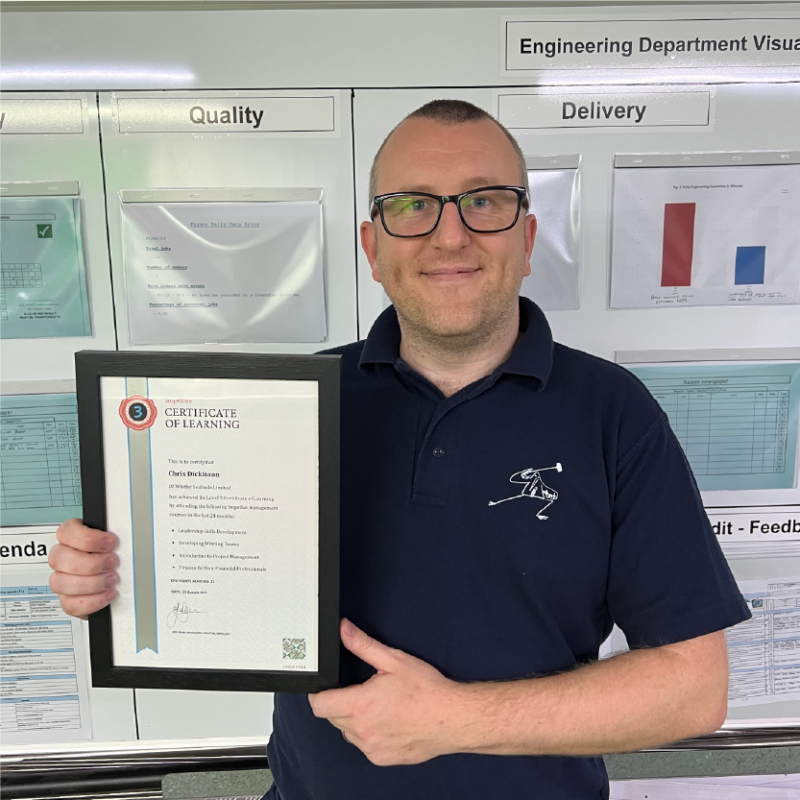Seven tips for improving employee engagement through leadership
It is widely acknowledged that an engaged workforce can increase innovation, productivity and bottom line performance while reducing costs related to recruitment. The overall working environment and wellbeing of employees is also enhanced in highly engaged organisations.
However, in a recent study¹ 52% of employees felt their boss could do more to appreciate them.
The same survey also showed that 72% felt that motivation and morale would improve if managers thanked them more and noticed their good work.
How satisfied are your employees? How often do you recognise their efforts?
We identify seven tips below for helping to boost employee satisfaction and team engagement – a few of these will require financial investment but the majority merely demand a flexible approach and attitude and possibly changes in your behaviour as a manager.
Seven tips to boost employee satisfaction
- Say ‘thank you’
It costs nothing to recognise what your line report has achieved by thanking them, but it means a lot to them. Your regular 1:1 meetings provide an ideal opportunity to acknowledge their efforts, but the occasional genuine ‘thank you’ in front of the rest of the team or at their desk at the end of the day will be well received too.
Organising a team-building event or social activity to show your appreciation for the team’s hard work at the end of the financial year or after a particularly busy period also helps to boost morale.
- Display your commitment to the organisation
It may seem bizarre, but having a manager who has a clear vision of where the organisation is going and who is visibly committed to working to make it succeed is very inspiring for those around them. There’s nothing more deflating than reporting to someone who doesn’t seem to be onboard with the organisation’s mission, vision and values, as team members can feel they are out on a limb and fighting against the tide.
- Show empathy
Employees respond favourably when their manager is empathetic and supportive. This may be when they are experiencing a particularly trying time – in or out of work. It could, however, just be on a regular basis by acknowledging workload, schedules, internal tensions. A supportive manager who treats their staff fairly and with respect will be rewarded with a committed, happy team.
- Involve your team in decision-making
Consult with your team members about important decisions. They may have great ideas or insight. In any case, they will feel valued to have been involved and even if their opinion may not have a direct bearing on the final decision, you’ll be much better positioned to handle the outcome if you know how they feel.
Regular communication that clarifies the position rather than leaving your employees to listen to office gossip goes a long way to engendering trust and confidence in a manager, particularly if you have line reports who resist change.
- Discuss training and development needs
In the CIPD’s Autumn 2016 Employee Outlook² 24% of employees were dissatisfied or very dissatisfied with the opportunity to develop their skills in their job. To know that their manager supports their learning and development and that the organisation is prepared to invest in training for them is encouraging for employees.
However, it should not just stop at your staff. Managers, themselves, should be open to self-reflection and be willing to seek and receive feedback on their people management skills. Many managers are highly skilled and technically qualified and have been promoted into their roles of managing people due to hard work and success, but they have not received any formal training in people management skills. In fact, 53% of respondents to a CIPD study³ described their people skills as ‘ineffective’, despite scoring highly on technical ability, budgeting and financial management.
If you are prepared to develop your own leadership skills, you’ll become more confident in handling your people and gain skills to help boost employee satisfaction.
- Introduce an employee feedback process
The level and frequency of feedback will vary dependent upon the size of your organisation. Be it a box to enable employees to anonymously ‘post’ comments, a quarterly employee forum attended by a representative from each department and a director or an annual employee satisfaction survey – the most important aspect is that the leaders of the organisation are seen to be behind the project, that they regularly communicate what is happening and that action is taken from the employee feedback.
Often, what is important to your people is something that you would least suspect and can be resolved quite easily and inexpensively, but which gives a boost to employee satisfaction.
- Implement a peer to peer recognition scheme
While recognition from a line manager is essential for an employee to feel engaged in their role, recognition from colleagues can deliver a huge boost in satisfaction levels too. A manager/director from another department in the organisation who is impressed by an employee’s efforts or a peer in the team who is grateful for their colleague’s support during a frantic period – either way, if the employee receives a ‘thank you’ card, it is very inspiring that their hard work has been acknowledged.
If the scheme allows for a small monetary reward in the form of a gift card, product discount or the ability to leave the office a couple of hours early, so much the better, however, this is not essential. It’s the public appreciation of what’s been done that creates the wellbeing factor.
¹A study by Reward Gateway of 500 employees and 500 senior decision makers
² CIPD’s Autumn 2016 Employee Outlook
³ CIPD data published in January this year























